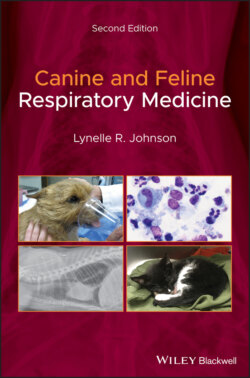Читать книгу Canine and Feline Respiratory Medicine - Lynelle Johnson R., Lynelle R. Johnson - Страница 22
Tachypnea History
ОглавлениеTachypnea is most often associated with parenchymal or pleural disease, although in the cat tachypnea can also be encountered with bronchial disease. Parenchymal diseases that lead to tachypnea are primarily pneumonia and pulmonary edema. Pneumonia (infectious, aspiration, fungal, or interstitial) can be acute or chronic and insidious in onset. Both pneumonia and pulmonary edema are typically associated with systemic signs of illness such as lethargy, anorexia, and weight loss.
Tachypnea due to pneumothorax is usually acute; however, pleural effusive disorders can result in either an acute presentation with respiratory distress or a more chronic development of signs due to slow accumulation of fluid. Usually, the degree of respiratory distress is associated with the rapidity of fluid or air accumulation rather than with the specific volume present. Cats seem to be particularly sensitive to addition of a final, critical volume of fluid that overcomes their ability to compensate.
